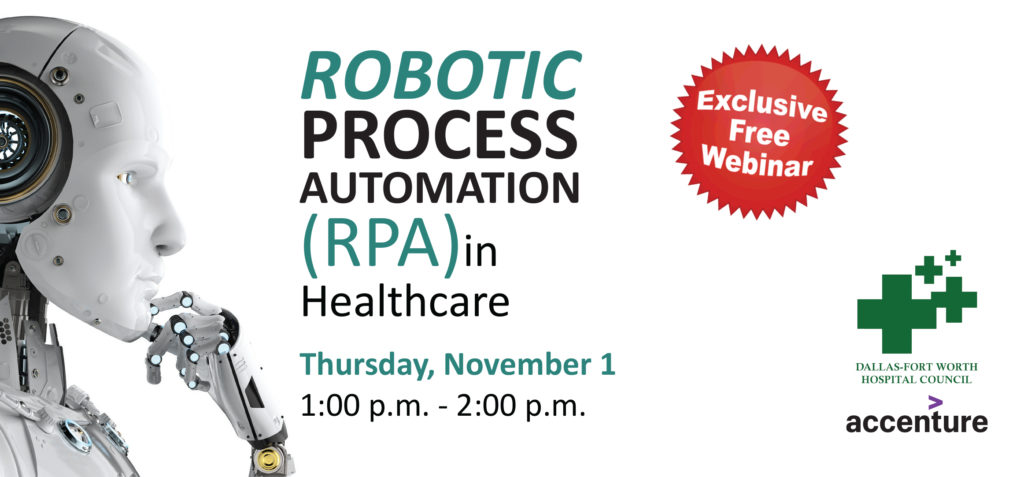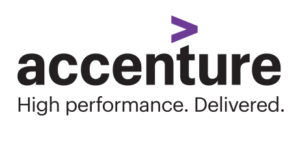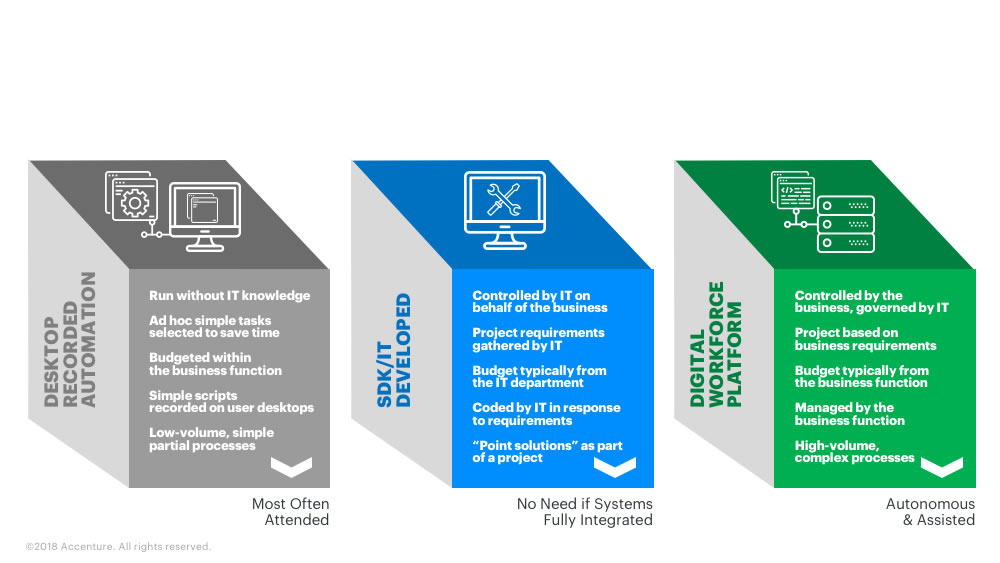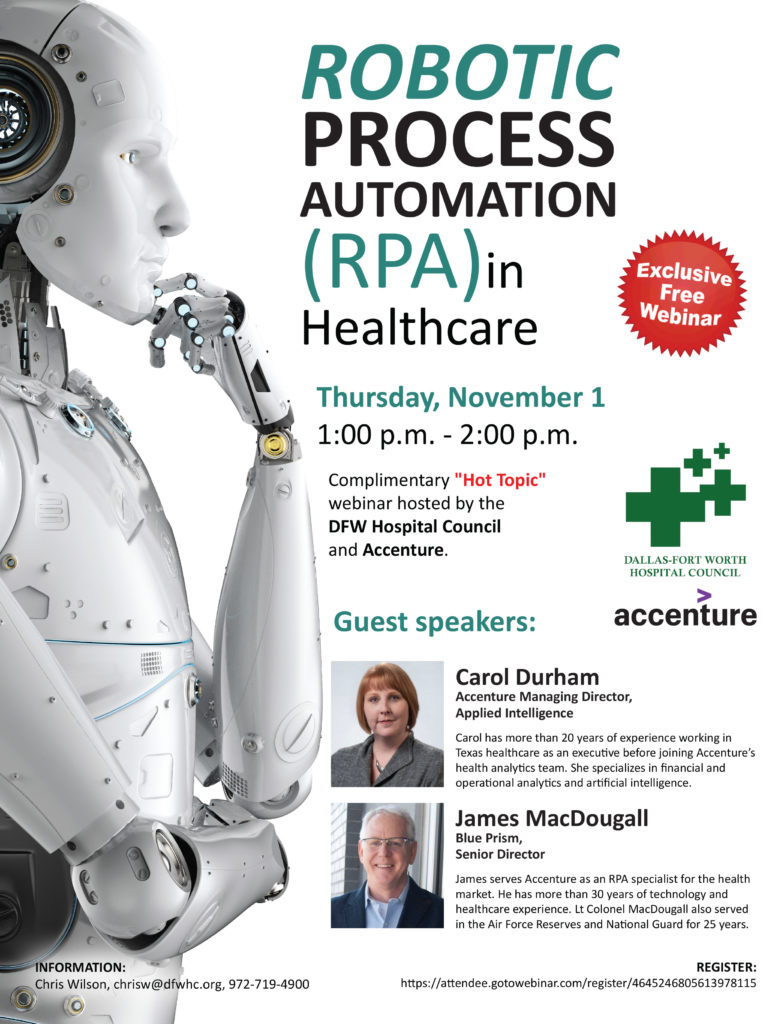
RPA Done Right: Preparing for Automation

In previous blog posts (No. 1, No. 2), we described the three approaches to robotic process automation (RPA), namely Recorded Desktop Automation (RDA), Software Development Kits (SDK), and RPA Digital Workforce, each having its rightful place to solve for specific business requirements. But RPA Digital Workforce is the only solution that can securely scale across the enterprise (being governed by IT) while simultaneously being resilient under the development, management, and change control of the business’ operations. We also shared some healthcare-specific use cases to help you identify areas in your organization where you could benefit.
The most powerful aspect of RPA is that it can extend throughout the enterprise’s Intelligent Automation ecosystem. RPA will not only improve the speed of a process but can also be used to connect with all enterprise applications and Application Programming Interfaces (APIs), enhancing the capabilities of cognitive services, machine learning, and conversational virtual work agents—all of which enhance workflow and analytics. Because of this, it is of paramount importance to select, deploy, and manage the technology well. RPA may be thought of as the heart of the organism—the key component of the circulatory system enabling blood and lymph to be supplied for the body’s functions. If RPA is correctly applied, an organization can run the four-minute mile without even breathing hard, and then it can endlessly repeat the race over and over without rest.

There is a right way and a wrong way to implement RPA. More accurately, there is a singular, superlative approach, and any compromise will yield something less than optimal. Unfortunately, it could also result in something far worse, so organizations must understand best practices for RPA—what we call RPA Done Right.
RPA Done Right requires the organization to appreciate that it is adopting a digital workforce that will augment its human talent—a set of digital workers that sit inside the organization’s infrastructure. Similar to the human employee, a digital worker is controlled with compliance, security, permissions, and priorities. But unlike a human worker, it perfectly performs only and exactly what it is designed to do, 24 hours a day, seven days a week, and exponentially faster. The possibilities at scale are astounding, resulting in performance efficiencies and return on investment (ROI) that is off the traditional charts. According to McKinsey & Company in Jobs Lost, Jobs Gained: Workforce Transitions in a Time of Automation, organizations that adopt automation technology properly will lead their markets.
The RPA Done Right Strategy
The cornerstone of RPA Done Right is a strategy that addresses the full RPA construct, including organization and talent, processes, technology, and change management. RPA’s design should deliver optimal functionality and security from threats. The RPA COE should be easily maintainable and future-proofed to integrate new technologies—security, applications, Artificial Intelligence (AI) evolution—and accommodate for inevitable expansion of demand and use cases. RPA must be powerful, capable of connecting to all technologies and appliances, both internal and those externally delivered by third parties. Lastly, the RPA solution must be flexible to allow an adoption rate that is congruent with the culture and goals of the enterprise.
RPA is both a science and an art—a proven discipline and a creative endeavor that combine to ensure success. The following building blocks sit on top of the strategy cornerstone:
1. Quantify what you want to accomplish in objective and subjective RPA business goals.
2. Identify which processes are good candidates for automation and then prioritize them.
3. Understand and communicate the business case of each process, such as hours back to the business, reduction in errors, financial ROI and payback period, effects on higher-value work accomplished, and increased quality of revenue and expense cycles.
4. Define roles and responsibilities of the digital workforce and exception handling.
5. Select the right RPA tool and adopt a best-of-technology ecosystem strategy, combining RPA with AI for breakthrough results and leveraging automation to evolve the workforce.
6. Include IT in the early stages of planning for awareness of the systems and applications involved, as well as HR for proactive messaging to the human workforce and to plan for role adjustments.
The RPA journey is challenging, but it is increasingly necessary to deliver affordable and excellent healthcare. Use cases are expanding in the industry every day, with exciting results for all stakeholders, including employees, patients, donors, contractors, vendors, auditors, and board members. It improves the patient experience and accelerates the quality of care, for every patient, at every encounter.
Join Our Webinar
On November 1, Accenture and Blue Prism will host a webinar to demonstrate and discuss the details of RPA Done Right. It will be our pleasure to hear your concerns and use-case questions. This webinar will also provide you with introductions to pursue your specific RPA needs. You an register by clicking the graphic below.

Accenture posts third in series of blogs in advance of Thursday’s webinar
10/29/2018